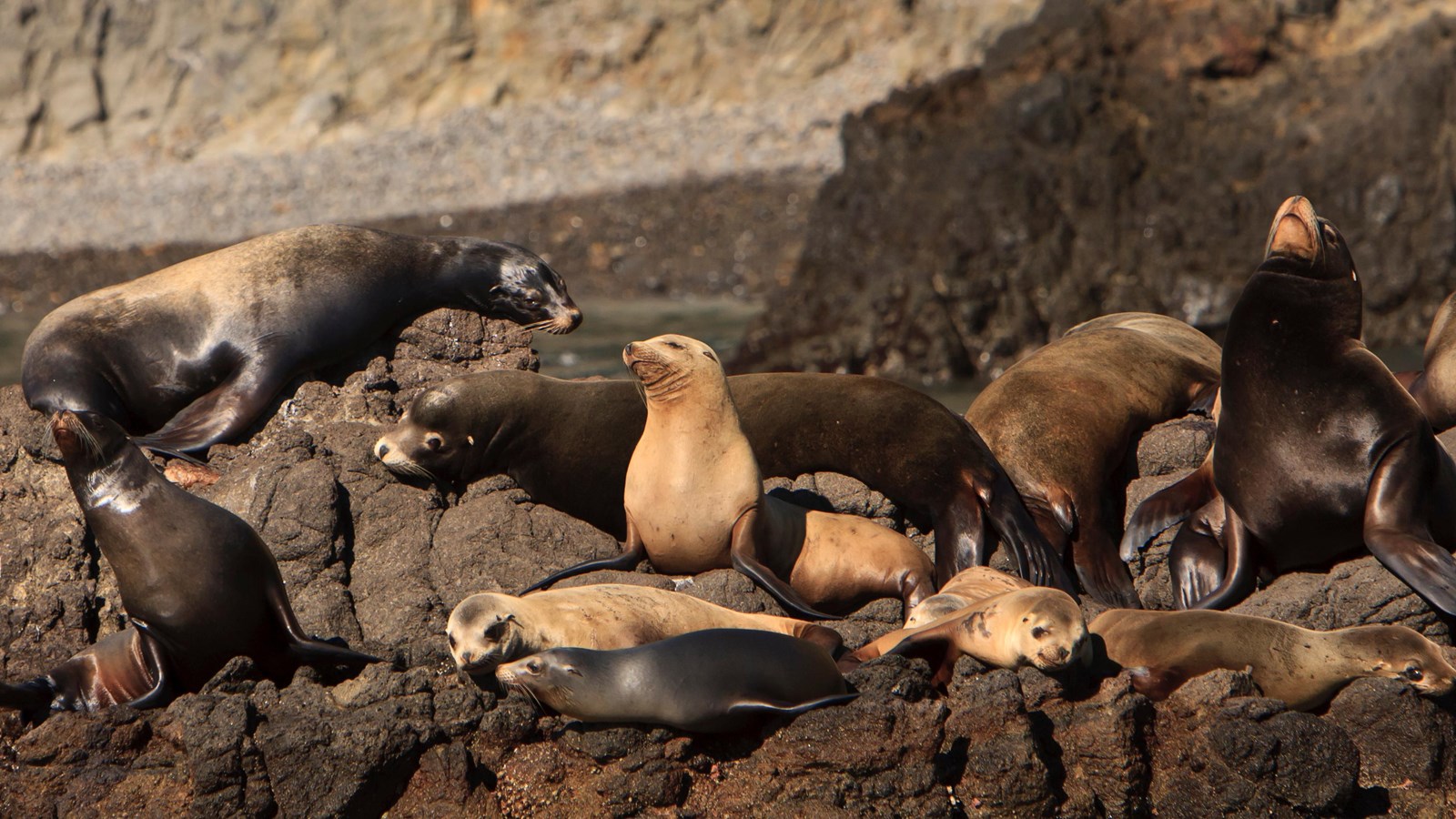
California sea lion pup demography
Unusually warm sea surface temperatures have been associated with declines in pup births, increased pup mortality, and poor pup condition among California sea lions.
The California sea lion lives in the California Current System that extends from the coast of British Columbia, Canada down to southern Baja California, Mexico. As top predators in the marine ecosystem, sea lions serve as sentinels of ocean conditions and changes occurring across the food web. For more information, download the California Sea Lion Pup Demography chapter.
San Miguel Island off Santa Barbara is home to one of the largest California sea lion colonies. About 50 percent of the births on the island occur in the Point Bennett Study Area, where population changes for the entire colony have been tracked since the 1970s.

Credit: Tim Hauf
What does the indicator show?
- Sea lion pup counts, death rates and growth rates at the Point Bennett study area fluctuated between 1997 and 2016. Years with high pup counts suggested that pregnant females experienced good prey conditions. Pup counts were lower in years with warmer ocean waters.
- High pup mortality rates and low pup growth rates occurred in years when sea surface temperatures were unusually warm.
Why is this indicator important?
- Top predators like sea lions are visible indicators of how marine organisms at all levels within the food web are influenced by ocean conditions. One of their greatest threats comes from changes in food resources due to climate and other influences such as commercial fisheries. Tracking pup populations provides insight into how sea lions are responding to these disturbances.
What factors influence this indicator?
- Sea lion pup births, pup survival, and growth largely depend on the availability of fish that make up the sea lion diet. When surface water temperatures are unusually warm, sea lion prey are likely to move north or to deeper waters. Lactating females must travel farther for food for extended periods, leaving malnourished pups stranded along the coast.
- A wind-driven ocean process known as “upwelling” carries deep, cooler, nutrient-rich waters towards the surface, fueling the marine food web. Less prey is available when upwelling is weak.
- Warm waters can amplify harmful algal blooms along the California coast. Certain algae species produce toxins, such as domoic acid, that can enter the food web, contaminate prey species and pose a threat to foraging sea lions and their offspring.
California sea lion pups were stranded in record numbers on Southern California beaches during the 2014-2016 marine heat wave (“The Blob”) as mothers struggled to feed the pups when their prey shifted farther north.
Credit: Jim Milbury/NOAA Fisheries
Additional resources
- National Oceanic and Atmospheric Administration, California Current Integrated Ecosystem Assessment
- National Oceanic and Atmospheric Administration, NOAA Fisheries, Species Directory: California Sea Lion
